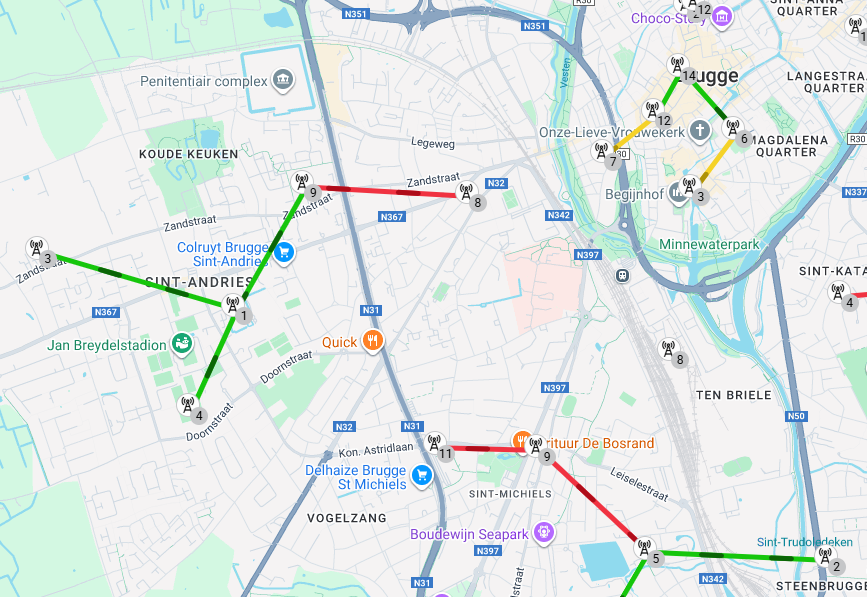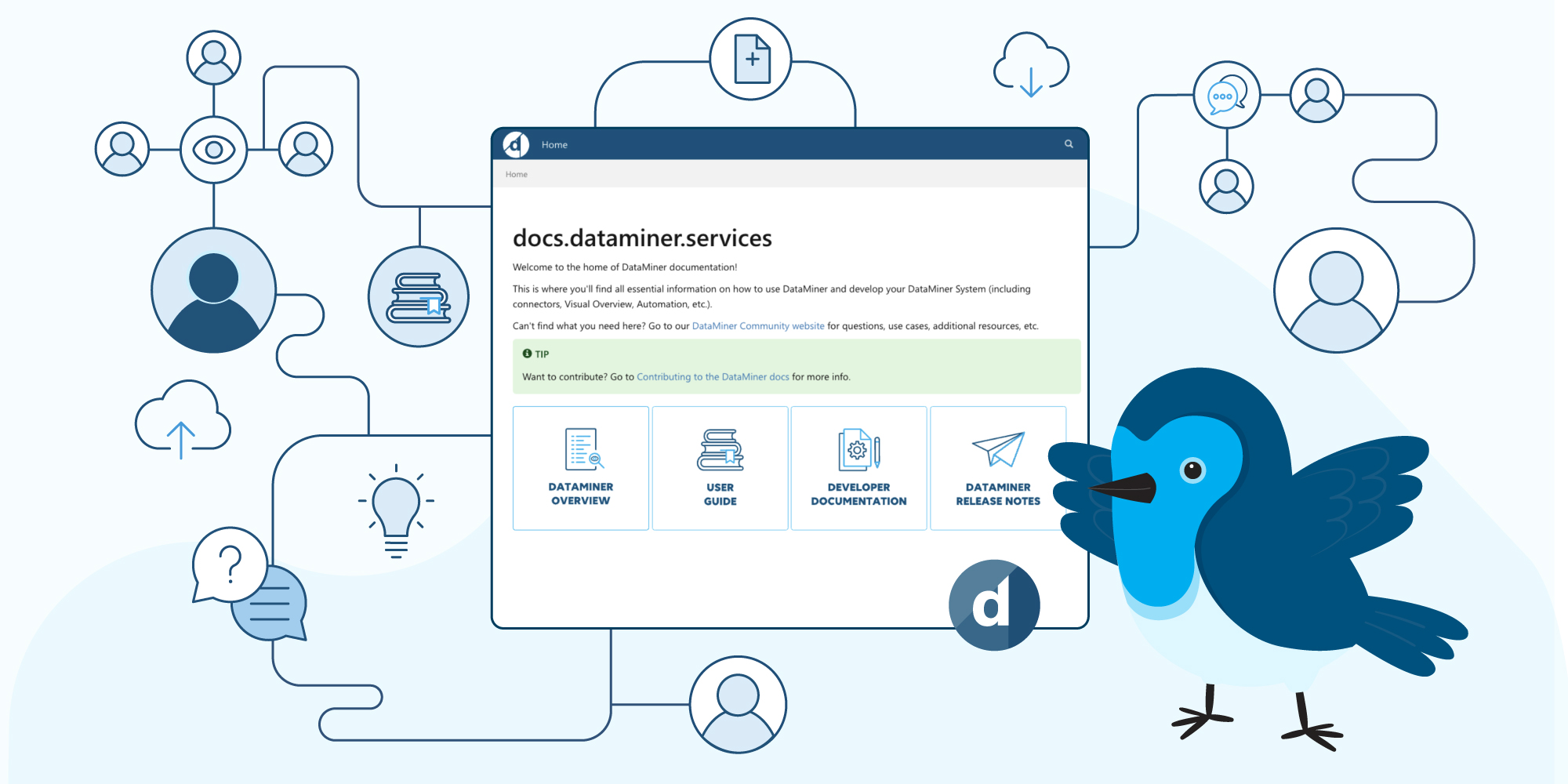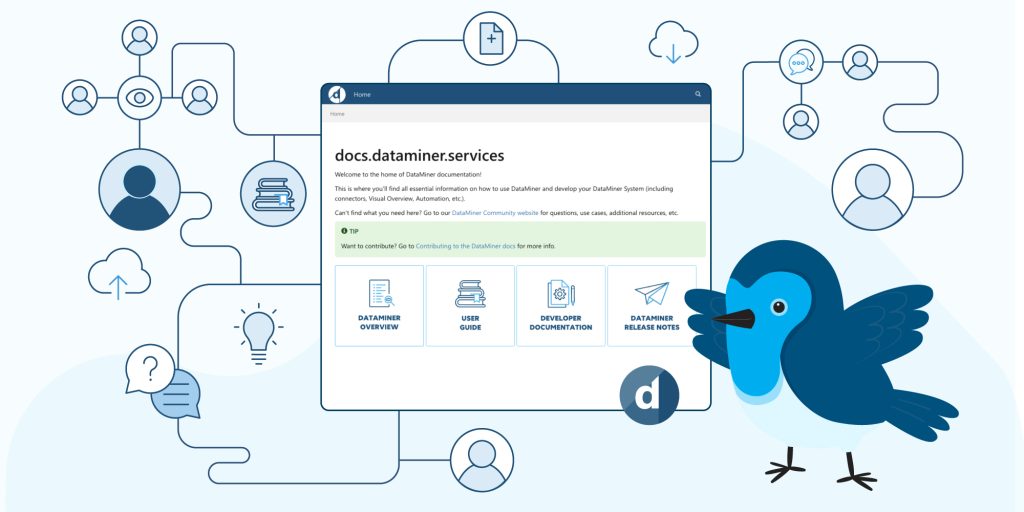The DataMiner documentation is continuously growing and improving. That’s why from time to time we like to provide you with a summary of all things new in the DataMiner Docs.
Here’s a quick overview of the changes we’ve added to the documentation for DataMiner 10.5.9:

- A few changes were introduced to the Dashboards and Low-Code Apps modules:
- You can now add conditional coloring to connection lines in the maps component. This lets you apply color filters to specific columns, making it much easier to spot issues at a glance. For example, you can highlight connections where the quality drops below a certain threshold, turning lines yellow or red, so potential problems stand out instantly on your map.
- It is now possible to assign custom names to your dashboard and app components. These names appear in the lower right corner of each component, making it much easier to identify and keep track of everything on your screen.
- The output of an Automation script can now be directly reused in the post actions of a Launch a script action. To keep things clear and intuitive, actions are now numbered in a hierarchical structure (1, 1.1, 1.2, 2, 2.1, …). This way, you can quickly reference the right action when linking output data from your scripts.
- DataMiner upgrade packages now include both the CloudGateway DxM and the Data Aggregator DxM. If installed on your system, these DxMs will be updated to the latest version during a DataMiner upgrade.
- In Cube, the Large Alarm Trees BPA test is now available, which retrieves the active alarm trees and checks if any are getting too large. Thanks to this new test, you can take the necessary corrective actions before an excessively large alarm tree can have a negative impact on your DataMiner processes.
- In System Center, there’s now a dedicated Automation page where you can view log information for all Automation scripts across your DataMiner System.
- The brand-new VerifyNATSCluster prerequisite check is now automatically included in upgrade packages. This check makes sure the crucial NATS service is up and running on all required DMAs and that communication between all NATS nodes is working as it should.
- From now on, in DataMiner Cube, the default web browser engine will be Edge instead of Chromium.
- The DataMiner landing page, home of all DataMiner web apps, has been redesigned.
Curious about the updated DataMiner landing page?
The DataMiner landing page is now cleaner, simpler, and more flexible than ever. Want to know exactly what has been changed? Check out our blog post for all the details.

Content Expert: Thibault Vincke
But those are not the only things we’ve changed recently!
- The overview of all available dashboard and low-code app visualizations has been reworked. A list of icons is now accompanied by short descriptions, so you can either find the icon you saw in the UI or pick the visualization that best suits your needs.
- A new troubleshooting procedure was added to help you with any problems related to DataMiner as a Service (DaaS).
Noticed something that could be improved in the DataMiner documentation? Your feedback can make the difference! Submit an issue or propose your changes on GitHub! If you’re a DevOps Professional, you’ll also score some points in the process 😊
Previous DataMiner releases

BLOG
What’s new in the documentation for the 10.5.8 release?
Find out what’s been added to the documentation for DataMiner version 10.5.8.

BLOG
What’s new in the documentation for the 10.5.7 release?
Find out what’s been added to the documentation for DataMiner version 10.5.7.